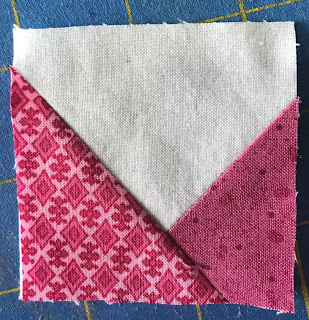What a long strange year we have all had. There was unexpected time for quilting as quarantine popped up seemingly out of nowhere. For me, a fever of organization had a phase along with lots of time reading and streaming TV. Plenty of time for all of that, but also a lack of motivation as one day bled into another that looked just the same. I have plenty of flimsies to show for the year, but a house full of returned students left me short on space to accomplish the actual quilting that would lead to finished quilts. Still, with all of that, I am excited to plan for a fresh start. This week, I hope that we will all share our accomplishments from 2020. Then next week we can turn a page and enjoy a fresh start like no other.
I have several new quilts in the works, and I will be posting tutorials for the blocks in January. If you have new quilts planned and want to share links or instructions, I will be happy to list them on the RSC21 page. I have almost fully committed to the idea of a new challenge quilt for 2021. It is going to be called Full Stop! And it will have a punctuation theme. I have the first block done and will post a tutorial and more details on January 1. First though, the linky tool is below, so let us wrap up the old before turning the page with finality.
Rainbow Scrap Challenge finishes and other assorted quilts (mostly flimsies) from the year to forget.
Diagonal Strings. I have a tutorial for this block scheduled to post tomorrow.
Framed 4 patches. I always have a stack on nine patches on hand and have been trying to find a new way to use them each year. Next year will be Sister's Choice.
Ocean themed quilt for a friend. I think I quilted more for other people than myself this year, hopefully that will change in 2021.
Soul Searching - This may be the only quilt that I fully finished this year! I have seen so many people make this quilt over the years and I have loved it each time.
Cats quilted for another friend from work. She made this for her son but then was scared to quilt it because she has only ever tried stitch in the ditch.
Sprouts (flimsy). I thought this one would be taller, but in the end I just let it do what it wanted.

9 Carat Diamonds (flimsy). This is a pattern I have made at least a couple of times. I saw it initially on Oh Scrap!. I will look for link to the tutorial.
Four Squared, I finished this one last year but sewed the binding on this year. This is another pattern I keep making over and over.
Temecula Sampler (flimsy). This was a block of the month that I had been saving for many years. I think it needs a border or two to feel done.
Tiny Tuesday Sampler (flimsy). This was the challenge quilt from 2019. I didn't know when the year started that we would be moving houses. Things got a little hairy, but I still finished it in the end. I think this one wants a wide border in grey with maybe an inset of small rainbow fabrics.
New York Beauty (flimsy). I designed and started this long ago, be then got sidetracked along then way. I think an wide border is needed on this one as well.
Zig Zags, quilted for a friend.
Beachside for our bed. I guess this is another quilt that I fully finished in 2020.
A few more quilted scrap baskets
Assorted zipper pouches.
And a partridge in a pear tree?





















































